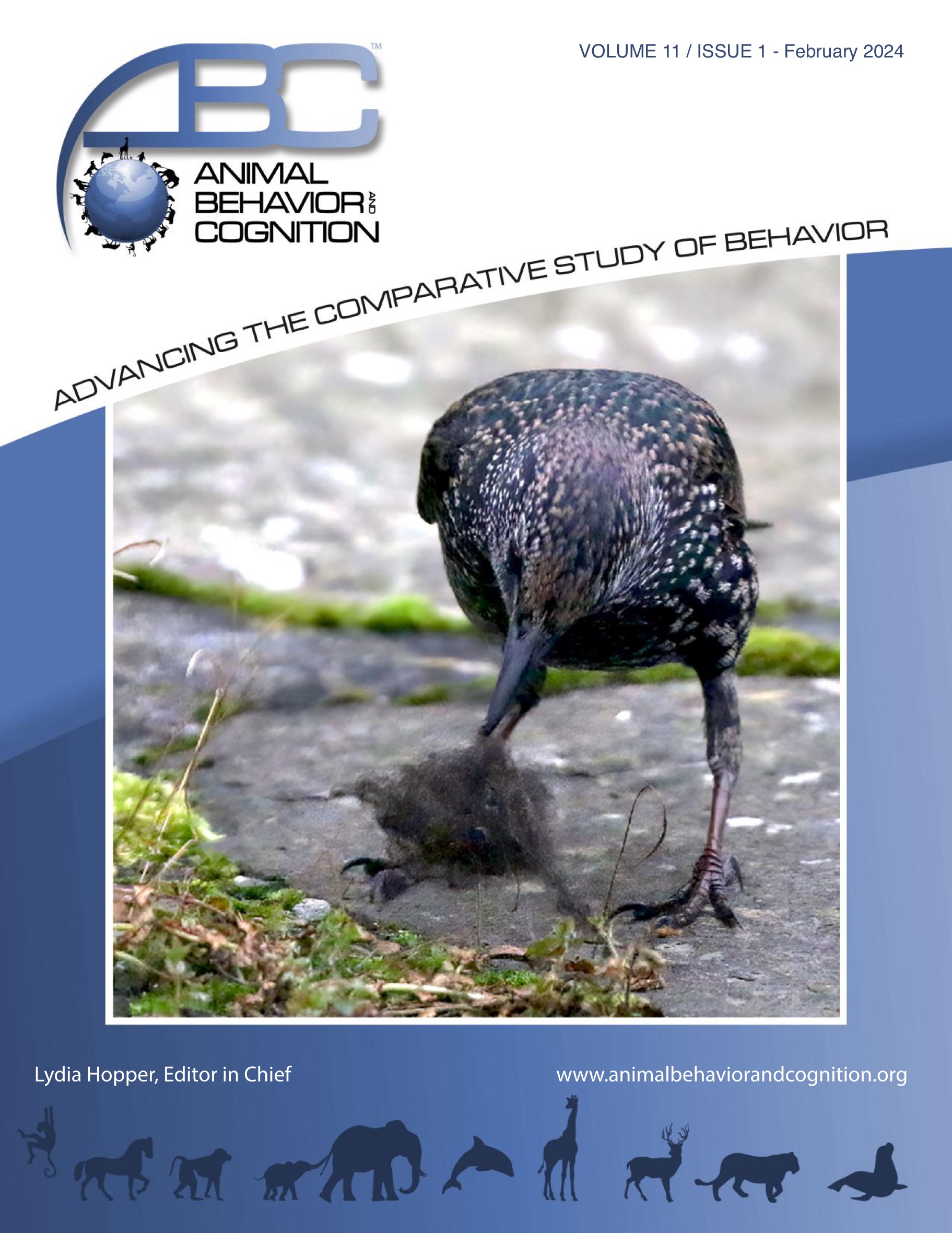Vol 11, Issue 1, February 2024
The Platyrrhine Primate Cebus imitator Uses Gaze to Manipulate and Withdraw Food to the Mouth
Citation
Whishaw, I. Q., Mah, M. A., Casorso, J. G., Chacon, E. M., Chalk-Wilayto, J., Laird, M. F., & Melin, A. D. (2024). The platyrrhine primate Cebus imitator uses gaze to manipulate and withdraw food to the mouth. Animal Behavior and Cognition, 11(1), 1-23. https://doi.org/10.26451/abc.11.01.01.2024
Abstract
Orienting a food item held in the hand to withdraw and optimally place it in the mouth for eating (withdraw-to-eat) is mediated by vision in catarrhine anthropoide and by nonvisual strategies in strepsirrhine primates. The present study asks whether vision contributes to the withdraw-to-eat movements in a platyrrhine anthropoid Cebus imitator, a member of a monophyletic primate suborder whose stem group diverged from catarrhines about 40 million years ago. Cebus imitator’s gaze and hand use for foraging for fruit is examined in its fine branch niche, the terminal branches of trees. Video of reach, grasp and withdraw-to-eat movements with associated gaze were examined frame-by-frame to assess food manipulation and its sensory control. Cebus imitator uses vision and touch to reach for and grasp food items with precision and whole hand grasps. They use vision to orient food items held in-hand into a precision grip and their withdraw-to-eat is assisted with a vertically oriented hand. The conjoint use of vision, a precision grasp, and hand posture and a central representation of object control likely originated in stem anthropoids and was derived from the staged evolution of the visual manipulation of food and other objects.
Keywords
Capuchin feeding, Food manipulation, Fruit foraging, Primate hand use, Vision for hand use, Visual food handling, Platyrrhine primates
